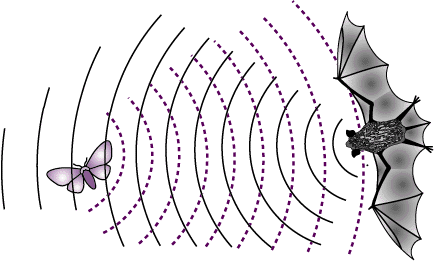Remakes are easier to get funded because they have a proven record. That has traditionally been what has driven Hollywood to keep producing retreads. Same story, new cast.
What’s been happening lately differs because X-gen and later directors who grew up liking certain films want a shot at putting their spin on older stories. It’s homage and tribute, plus maybe improvement.
Being also commercially viable in investor terms, they can get funded and hope to branch into their original work once they’ve made investors profit. Trouble is, original work has no market record, so they’ll be told to do more of the same.
Imagine books working that way.
Oh, but some do. Rewriting classics that are in public domain, changing Greek myths or Shakespeare into modern terms — ironic, since the Bard of Avon pilfered his plots often from Italian plays.
Then there are pastiches, the use of characters and settings invented long ago and proven popular over the years. Echoing Verne, Doyle, or Poe provides much modern story fodder.
One recent novel was promoted as “Stephen King’s Carrie” but from another point-of-view. The mother’s, I think it was.
Is this good or bad? Depends on execution.
True horror isn’t the monster, it’s how we react to it.
Done well, a new viewpoint can empower. Grendel by John Gardner gave us Beowulf from the monster’s view, which, given the light touch of deep scholarship underpinning that brief novel, illuminated themes inherent in the original.
Derivative mimicry and riding the coat-tails of prior success is allowed, yes but it debilitates the wider, deeper endeavor of art. A good way to enervate a classic is to mimic it on a superficial level, demonstrating no understanding of what deeper elements made it last through time’s acid test. Still, if it sells, it’s permitted by the gatekeepers. Might even be encouraged by profit-uber-alles publishers.
We see such examples as fan fiction.
We see such a smattering of quick, shallow sales as exploitative. Grabbing a quick buck while diluting a genre, as happened when Stephen King’s first books created a boom in so-called horror, brings on its own bust. Mystery novels with hasty supernatural elements added might have sold fast with the horror label slapped on them, but did nothing to elevate genuine dark fiction, which explores deeper the terror and revulsion life can bring. It’s standard business-as-usual, to pump out what seems to guarantee an immediate sale, but at the cost of a nascent genre feeling its way out of the egg. A mad scramble results, one might say, and the public is soon sick of it. Overexposure, super-saturation, and a call for The Next Big Thing results.
These practices vitiate publishing, cinema, gaming, and all other arts.
So how can we find better stuff?
First, be assured that superior work is out there. Too much of it exists for any one of us to read in our lifetimes, to view, to play. Creators dedicated to improving art forms and elevating their own standards are out there. Many of us produce solid work yet attention for it eludes us.
It’s not knowing how good we are, it’s getting others to notice, that’s what’s most difficult.
We often turn to the docent approach, or curating collections of works, or clustering. Safety and support in numbers, we think.
Moscow Mafia, a reflection of the Bloomsbury Group or perhaps the Algonquin Round Table, was an example of clustering. Form a local writers’, painters’, or musicians’ group to critique and promote each others’ work.
Become an artistic enclave, a hot-house where wild hybrid orchids can grow.
Hunger alone clumps like-minded people. Hence ‘mafia’ in Idaho.
Sometimes we can sell veggie burgers to a world demanding Whoppers. A cachet can help draw interest. The book that … The writer who … The work ‘they’ don’t want you to see …
Then there is collecting similar works and discussing them, getting heads together hoping to spark a school of thought or at least wider curiosity. Think of museums.

Curators we can trust help inform us of what’s worth our attention. For some, reviewers serve this purpose. Reliable tastes allow us to calibrate our focus, even if we disagree with a given reviewer. If we consistently agree, or disagree, it gives us a quick litmus test with which to gauge a new work.
Word-of-mouth is generally the most effective form of curating, or so we’re told. A book or movie or restaurant, anything recommended by friends or family, is more likely to suit us because those folks presumably know us better than random marketers. They are aware of specifics in our tastes and not relying on demographic generality.
Book clubs can work, if it’s a genre we like, although each genre has sub-genres that can divide opinion. Mystery can be cozy, procedural, noir, detective, crime, caper, and so on. Horror can be splatter, body, or psychological, among many others. Since horror is actually a style made into a market category label, it can be applied to all genres. Science fiction can be hard, soft, cyberpunk, steampunk, dystopian, post-apocalyptic, or classic. Sub-genre proliferates as new elements become the focus of new writers with new approaches, new slants.
Some viewers, readers, or gamers prefer to stick with a sub-genre, while others like a range.
Neither choice is wrong. Variety is the cayenne of scrambled eggs.
How can a creator make the work stand out from the torrent of new stuff being issued continually? How can we proclaim our work Artisan, not Extruded Product?
Stunts can draw attention but not often in the right way. Leave controversy in its terrarium at the back of the closet.
Quality helps but it’s no guarantee. Generally, audiences are tone deaf, preferring a good story well told and presented in a shiny package while ignoring atrocious execution, be it bad prose, poor editing, or inconsistencies in game play.
Polished writing can bore or baffle, while plainspoken blunt narrative can entice and enthrall. Abstract art is often taken as an insulting sneer or infantile smears, while inane, banal, and saccharine representational art can, often does, soar into lofty auction prices. Clunky Pong-level games cling to popularity while stunning productions are lost in the Myst.
There remains a hope of liberty via Deus Ex machinations or adherence to an Assassin’s Creed. Aim high, but on a personal trajectory, and always resist conforming to the fascism inherent in commercial art.
This means quality both varies and is but a part of success. How many poor actors had careers due to looks, or connections? There are always sidereal issues and it may not be possible to pin them down, let alone manage them all. Our telescopes tend to squint.
We soon realize that, while marketing, a pleasing persona in social media presence, and value-added merch offers can help, ultimately it boils down to a signal cutting through noise to reach a targeted frequency.
Resonance sustains all art.
Some creators go with the flow of current popularity. They produce more of what sells most during their active career years. If high fantasy prevails, they write trilogies of Tolkien- or Martinesque echo. If urban or low fantasy is booming, they mimic cuts of Butcher.
Commercial considerations can subsume artistic integrity, and cynicism can set in before we know it’s in the room with us.
Some go against the grain, making work that defies contemporary norms, standards, or tastes. These test tolerances, often to destruction. Attention gained through controversy can work favorably or to detriment. Often both gain and loss happen at the same time. A spiral of contention can raise a given work while dropping its creator, who may never be welcome in the market again.
Then there are those who find joy, follow their bliss, and content themselves with their process, glad for any coterie their work attracts.
A few luck out to find their vocation fulfills them while granting popularity. What they are called to do by inner voices, drives, and impulses, propels them through life’s many choppy waves.
Being true to ourselves keeps the work centered. Personal interests chime because we’re not unique. Writing what we’d like to read, that’s a common bit of advice. Same goes for all art. Make what you hope to find or experience in the world.
Expressing ourselves, that’s part of it. To create isn’t to express, though. Creating encompasses expressing but reaches toward discovery, too. Often what’s created surprises even the creator. It opens doors, exposes new angles or worlds. This leads to exploring, also a part of creating.
Letting our work express and explore ourselves liberates from the myriad pitfalls a pursuance of art entails. The more we let go, the more of ourselves we find.
Art should be fun. A childish word, superficial and vague, fun describes how we feel when engaged in play. Creating is a part of playing. Watch children as they chatter and dance with imaginary or real friends in fantasy situations that fulfill needs even the shrinks can’t define. It’s joyous.
That’s what creating should always be, a release of inner joy and a capriole with the joy found around us. Pronk by the light of your inner Moon.
Cultivating our wishes, identifying our needs, and getting out of our imagination’s way provides a channel for our art. It will flow without turbulence if the conduit we make is true to ourselves.
Sustaining ourselves with art means setting art free. No rules, no restraints, no restrictions. Artists should do what they want how they want, and be amazed.
/// /// ///


